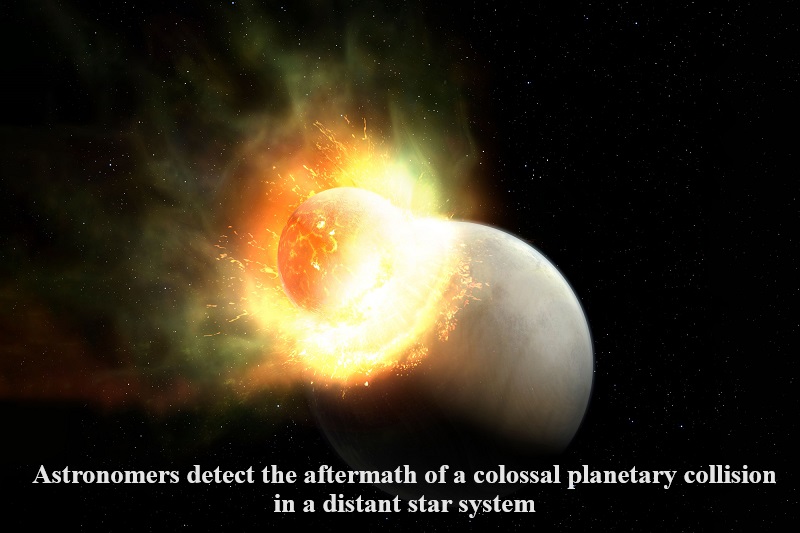
Astronomers have achieved a momentous breakthrough by detecting the aftermath of an immense planetary collision in a remote star system located at a staggering distance of 3,600 light-years away.
This extraordinary event entailed the violent fusion of two massive icy planets, resulting in the creation of a unique doughnut-shaped cloud primarily composed of vaporized rock and water.
The revelations stemming from this discovery were made feasible through the utilization of NASA spacecraft specifically designed for the surveillance of celestial bodies such as asteroids. This celestial collision holds significance beyond its breathtaking appearance; it presents an unparalleled opportunity to witness the real-time emergence of a new world and potentially uncover the enigmas shrouding the process of planet formation, according to reports from the New Scientist.
A collaborative team of astronomers, united by the inquisitiveness of a single individual, embarked on this groundbreaking scientific endeavor after noting the peculiar behavior exhibited by a star recognized as ASASSN-21 qj. This star, positioned at a vast distance of 3,600 light-years from Earth, displayed an exceptional pattern that piqued the curiosity of scientists across the globe.
The astronomers involved in this endeavor, guided by their desire to explore the mysteries of our universe, have provided humanity with a remarkable opportunity to comprehend the awe-inspiring processes that govern the birth of celestial bodies. This discovery serves as a testament to the extraordinary advancements in the field of astrophysics and offers a fascinating glimpse into the intricate workings of our cosmos, transcending the boundaries of our own planetary home.

Post Your Comments